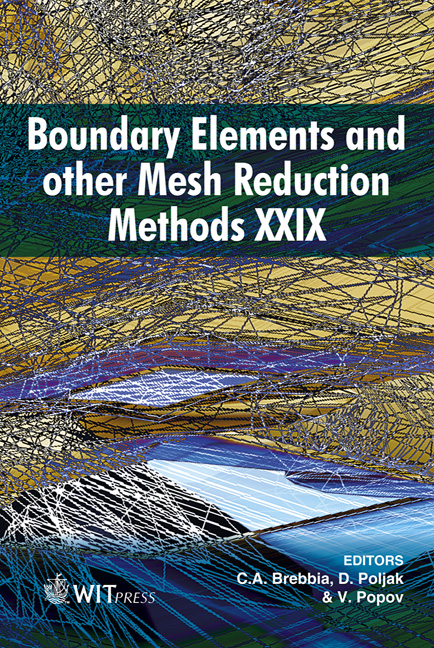Null-field Integral Equations And Their Applications
Price
Free (open access)
Transaction
Volume
44
Pages
9
Published
2007
Size
679 kb
Paper DOI
10.2495/BE070091
Copyright
WIT Press
Author(s)
J.-T. Chen & P.-Y. Chen
Abstract
In this paper, a null-field equation approach is proposed to deal with boundary value problems containing circular boundaries. The mathematical tools, degenerate kernels and Fourier series, are utilized in the null-field integral formulation. Although we employ the null field equations, we can exactly collocate the point on the real boundary. Thus, the singularity is novelly avoided since the kernel is expressed in a degenerate form. Five gains of well-posed model, singularity free, boundary layer effect free, exponential convergence and mesh-free approach are achieved. To demonstrate the validity of the present formulation, some applications are considered: (1) torsion problem, (2) bending problem, (3) SH wave impinging successive canyons. It is found that previous results by other investigators are not consistent with ours. After comparing with other independent solutions, the accuracy and efficiency of our approach is acceptable. Keywords: null-field integral equation, degenerate kernel, Fourier series. 1 Introduction Engineering problems can be formulated as mathematical models. In order to solve the boundary value problems, researchers and engineers have paid more attention on the development of boundary integral equation method (BIEM), boundary element method (BEM) and meshless method than domain type methods, finite element method (FEM) and finite difference method (FDM). Among various numerical methods, BEM is one of the most popular numerical approaches for solving boundary value problems. Although BEM has been
Keywords
null-field integral equation, degenerate kernel, Fourier series.





